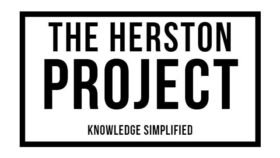The ideas in this post have been inspired by Rebel Ideas by Matthew Syed. Make sure to check out my Rebel Ideas by Matthew Syed: Summary too!
1. “Blind CV’s”
Unconscious bias is an important consideration when looking at diversity. It refers to a way that people are denied opportunities because of arbitrary factors like race or gender. An interesting real-life example of challenging unconscious-bias is when Claudia Goldin of Harvard University and Cecilia Rose of Princeton had an idea to conduct concert auditions behind screens. Musicians at concert hall shows was originally a male dominated field. One of the reasons for this is that before the musician started playing at the audition the judges would be making assumptions based on what the individual looked like before they even started playing. Even if the musician were one of the best players, the uninformed assumptions made by the judges would still play a role in deciding whether to take the person on or not.
By putting the musicians behind screens, the contestant would only be judged on their skill and talent. The result of these screens were that women’s chances of making it through to the first round increased by 50% and into the final rounds by 300%.
Now most job openings aren’t going to involve playing an instrument to impress the assessor. Instead it usually involves sending over a CV (Curriculum Vitae) which documents things like the applicant’s name, qualifications, location of school etc. One problem with this is that people can still fall victim to unconscious bias by not considering people with names from different cultures or schools which don’t fall into an “elite” category.
By “Blinding the CV” and removing certain types of demographic information this makes the recruiter focus more on the important aspects like the persons qualification and skills, rather than making assumptions based off things like someone’s name or the school they went to.
2. Shadow Boards
This involves including younger people to advise executives on key decisions and strategies and lift the conceptual blinkers that can attach to age.
These generally consist of a group of younger diverse individuals throughout the organisation who have regular input into high level decision making
This allows executives to leverage the younger groups insights and diversify their perspectives by considering the younger groups too. This allows people making the decision to be exposed to different ideas to consider.
Gucci – the fashion brand – put this into practice and created a shadow board where younger individuals had consistent interaction with the senior team. They talked through issues that the executive committee were focused on and provided new insights the executive teams had not considered.
Gucci’s sales have performed strong compared to their competitor Prada and part of this reason could be attributed to Gucci allowing new and unique perspectives to reach the decision makers at the top to consider.
3. Allow All Voices To Be Heard
If you have read my article Meetings are a Terrible Idea: Here’s 4 Alternatives to Think about you’ll realise how difficult it can be to get all voices heard.
Improving diversity should first start with ensuring all voices are heard. Even if you have a diverse organisation, if you do not give people the chance to speak up and voice their opinions then you will not be able to learn from everybody else’s perspectives.
Value everyone’s voice and hear them out. Develop a team culture where everyone feels safe to contribute and voice their viewpoints.


Pingback: Rebel Ideas by Matthew Syed: Summary – The Herston Project